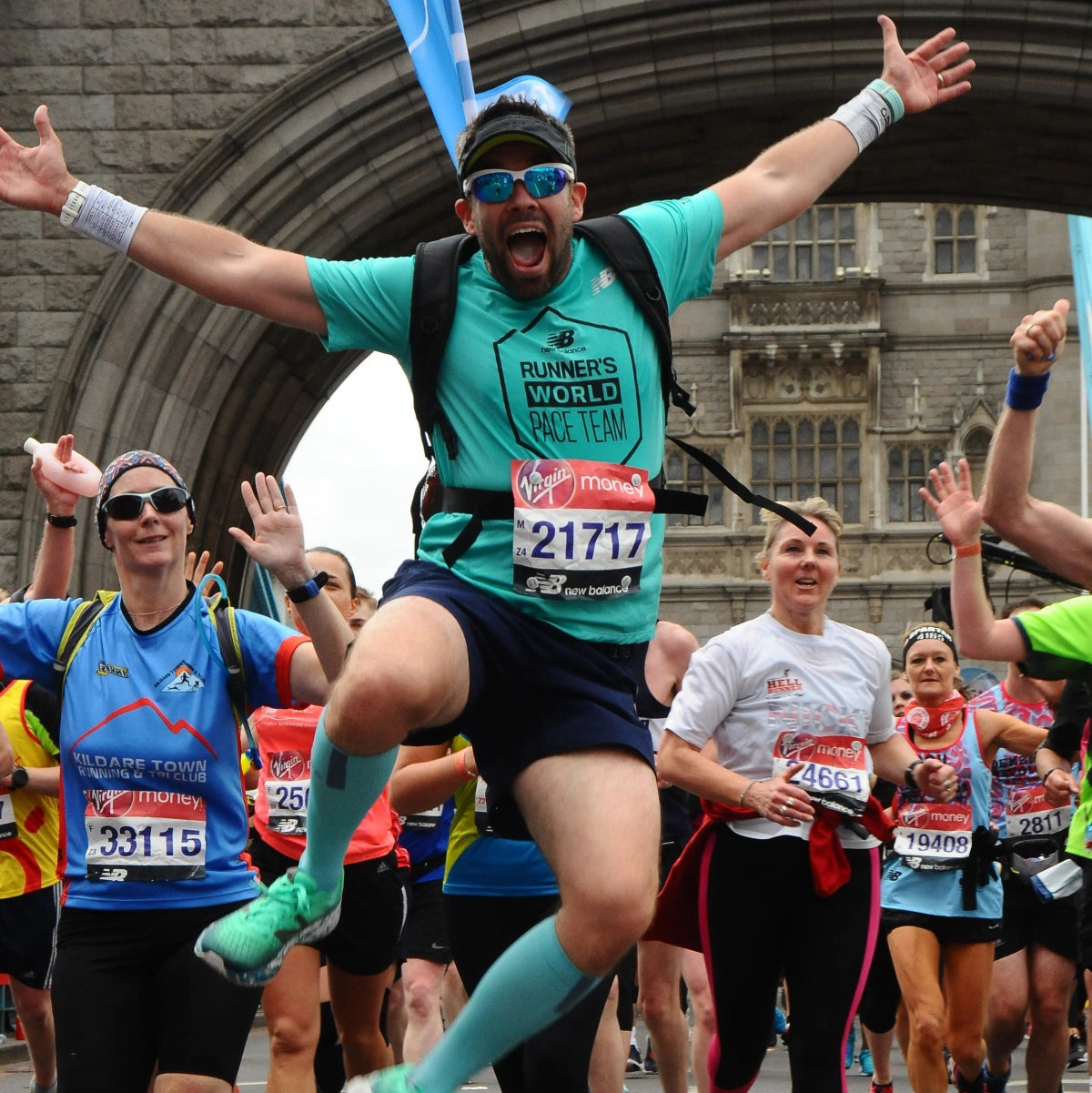
Cracking the Code: How to Set the Perfect Pace for a 4-Hour Marathon
Do you dream of crossing the finish line of a 4-hour marathon? Cracking the code to set the perfect pace for this challenging distance requires a combination of strategy, training, and mental fortitude. In this article, we will delve into the secrets of achieving your marathon goal within the coveted 4-hour window.
Training is the foundation of marathon success, and finding the right balance between speed and endurance is key. You need to build a strong aerobic base, improve your lactate threshold, and develop mental resilience to push through the inevitable tough moments.
But how do you set the perfect pace for a 4-hour marathon? It's all about finding that sweet spot where you can maintain a consistent speed without burning out too early. We'll explore different pacing strategies, using race prediction calculators, and training with a goal pace in mind.
Whether you're a seasoned runner looking to shave minutes off your personal best or a beginner aiming to conquer your first marathon, this article will provide you with the tools and insights to crack the code and achieve that 4-hour marathon dream. Let's lace up our shoes and get started!
Before you can determine the ideal pace for your 4-hour marathon, it's crucial to assess your current fitness level and understand your race goals. This will help you create a training plan that is tailored to your specific needs and abilities.
Start by evaluating your recent running performance. Look at your times for recent races or long training runs, and use online calculators or work with a coach to determine your current VO2 max, lactate threshold, and other key fitness metrics. This will give you a baseline to work from and help you identify areas that need improvement.
Next, consider your race goals. Are you aiming for a personal best time, or is this your first marathon and you're simply hoping to cross the finish line within the 4-hour mark? Knowing your specific goals will help you set the right pace and develop a training plan that aligns with your aspirations. Remember, it's important to set realistic goals that challenge you but are still achievable with the right preparation and mindset.
Once you have a good understanding of your current fitness level and race goals, it's time to determine the ideal pace for your 4-hour marathon. This is where the math comes in, but don't worry – there are plenty of online tools and resources to make the process easier.
First, let's break down the 4-hour marathon time. This equates to a pace of 9 minutes and 9 seconds per mile (or 5 minutes and 41 seconds per kilometer). To ensure you maintain this pace throughout the race, it's a good idea to aim for a slightly faster average pace, such as 9 minutes per mile (or 5 minutes and 37 seconds per kilometer).
You can use race prediction calculators to estimate your finish time based on your current 5K, 10K, or half-marathon times. These tools can provide a more accurate assessment of your potential 4-hour marathon pace, taking into account factors like your age, gender, and training history. Experiment with a few different calculators to get a range of pacing recommendations.
Now that you know your target pace, it's time to start training. Building a strong aerobic base is crucial for maintaining a consistent pace throughout a 4-hour marathon. Incorporate a mix of easy-paced runs, tempo runs, and interval workouts into your training plan to improve your endurance and speed.
One effective strategy is to train at your goal pace or slightly faster during your long runs and tempo workouts. This will help your body become accustomed to the desired pace, making it easier to maintain on race day. Be sure to gradually increase the duration and intensity of these workouts over time to build your fitness and confidence.
Additionally, consider incorporating lactate threshold training into your regimen. This type of workout, which involves running at a pace just below your lactate threshold, can help improve your ability to sustain a faster pace for longer periods. Aim for 20-30 minutes of lactate threshold running a few times per week, gradually increasing the duration as you get closer to the race.
Proper nutrition and hydration are essential for maintaining your pace and energy levels throughout a 4-hour marathon. Start by experimenting with different fueling and hydration strategies during your long training runs to find what works best for your body.
Before the race, make sure to carb-load in the days leading up to the event. This will help replenish your glycogen stores and provide the energy you need to sustain your pace. During the race, aim to consume 30-60 grams of carbohydrates per hour, either through sports drinks, gels, or solid foods like energy bars or bananas.
Hydration is just as important as fueling. Aim to drink 6-8 ounces of water or electrolyte-rich sports drink every 15-20 minutes during the race. This will help you stay hydrated and prevent cramping or other issues that could slow you down. Be sure to practice your hydration strategy during your long runs to ensure your body can handle the fluid intake.
Running a 4-hour marathon is as much a mental challenge as it is a physical one. Developing a strong mindset and strategies to stay focused and motivated throughout the race can make all the difference in achieving your goal.
One effective technique is to break the race down into smaller, more manageable segments. Instead of thinking about the entire 26.2 miles, focus on completing each mile or even each kilometer one at a time. This can help you maintain a steady pace and prevent the overwhelming feeling of the full distance.
Visualization is another powerful tool. Imagine yourself crossing the finish line, feeling strong and confident in your pace. Visualize yourself overcoming any obstacles or challenges that may arise, and picture the sense of accomplishment you'll feel when you reach your goal. This mental rehearsal can help you stay focused and motivated when the going gets tough.
Finally, don't be afraid to lean on your support system during the race. Whether it's cheering spectators, your running group, or a dedicated pacer, having that external encouragement can be a game-changer in helping you maintain your pace and push through the tough moments.
On race day, it's important to stick to your pacing plan and resist the temptation to start too fast. The excitement and adrenaline of the event can make it easy to get carried away, but going out too quickly can lead to a dramatic slowdown later in the race.
One effective strategy is to use a GPS watch or running app to monitor your pace throughout the race. This will help you stay on track and make adjustments as needed. If you find yourself running faster than your target pace, slow down gradually to avoid burning out too early.
Another tactic is to identify key landmarks or aid stations along the course and use them as pacing checkpoints. For example, aim to reach the halfway point at a specific time or maintain a consistent pace between aid stations. This can help you stay focused and on track throughout the race.
Finally, don't be afraid to adjust your pace if necessary. If you feel like you're struggling to maintain your target pace, consider slowing down slightly to conserve energy. Conversely, if you're feeling strong, you may be able to pick up the pace a bit without risking a major slowdown later on.
As you work towards your 4-hour marathon goal, it's important to be aware of common pacing mistakes that can derail your efforts. One of the most common is starting too fast and then hitting the wall later in the race. This can happen when runners get caught up in the excitement of the event and go out at a pace that's unsustainable.
Another mistake is not accounting for the course's terrain and elevation changes. If the course has significant hills or undulations, you'll need to adjust your pace accordingly to avoid overexerting yourself on the inclines and then struggling on the downhills.
It's also important to be mindful of the weather conditions on race day. Hot, humid, or windy conditions can make it more challenging to maintain your target pace, so be prepared to adjust your strategy as needed.
Finally, don't neglect the importance of proper recovery and rest between training sessions. Overtraining or not allowing your body to recover can lead to fatigue, injury, and an inability to maintain your desired pace on race day.
While running is the primary focus of your training, incorporating cross-training and strength exercises can also play a crucial role in helping you achieve your 4-hour marathon goal. These complementary activities can improve your overall fitness, strength, and efficiency, ultimately allowing you to maintain a faster pace for longer.
One effective cross-training exercise is cycling. Low-impact and easy on the joints, cycling can help build your aerobic capacity and leg strength without the same level of stress on your body as running. Consider incorporating one or two cycling sessions per week, either on the road or using a stationary bike.
Strength training is another important component of your training plan. Focus on exercises that target the major muscle groups used in running, such as squats, lunges, and deadlifts. These exercises can help improve your power, endurance, and running economy, allowing you to maintain your pace more efficiently.
Don't neglect core and stability exercises as well. A strong core can help you maintain proper running form and posture, which can in turn improve your efficiency and pace. Incorporate exercises like planks, bridges, and side-to-side core movements into your routine a few times per week.
Achieving a 4-hour marathon is a challenging but attainable goal for many runners. By understanding your current fitness level, calculating the ideal pace, and implementing a comprehensive training plan, you can set yourself up for success.
Remember to focus on building a strong aerobic base, improving your lactate threshold, and developing mental resilience. Incorporate targeted pacing workouts, proper nutrition and hydration strategies, and cross-training exercises to support your marathon preparation.
On race day, stick to your pacing plan, stay focused and motivated, and be prepared to make adjustments as needed. Avoid common mistakes like starting too fast or neglecting recovery, and trust in the training you've put in to carry you to the finish line.
With dedication, perseverance, and a well-crafted training plan, you can crack the code and achieve your 4-hour marathon dream. So lace up your shoes, embrace the challenge, and get ready to cross that finish line with a sense of pride and accomplishment. Good luck, and happy running!



Leave a comment
This site is protected by hCaptcha and the hCaptcha Privacy Policy and Terms of Service apply.